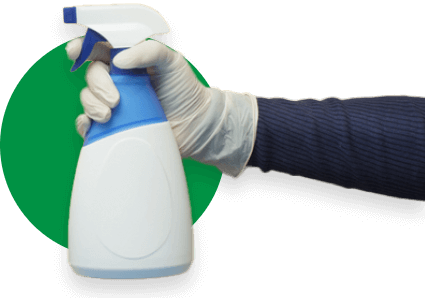Throughout the day and night, medical equipment is used to treat individuals in hospitals and healthcare facilities. While it is important to understand proper handling procedures, it is equally important to understand proper disinfection procedures. Unfortunately, millions of people globally suffer from healthcare-associated infections. This is because medical equipment was not effectively disinfected and sterilized. This begs the question, “How should I disinfect medical equipment?”
Luckily, there are plenty of appropriate applications healthcare workers can use. In particular, heat and alcohol can be used to disinfect medical equipment effectively. In this article, we will discuss why that is the case and various ways they can be implemented.
The Management of Contaminated Medical Equipment in Hospitals
Every hospital must have a complex and complete management process for medical equipment. With this, healthcare workers and patients can be properly protected from harmful bacteria and infections. To begin with, all healthcare workers and professionals must be fully informed of potential risks and appropriate safety procedures. One misinformed individual can lead to a plethora of issues.
Furthermore, cleaning, disinfecting, and sterilization procedures should be performed in the central processing department. Each healthcare facility must have one as it makes medical equipment contamination management more organized and controllable.
It is important to specify the different levels of contamination management. To begin with, cleaning means simply removing visible dirt and dust from an external surface. Moving on, disinfecting involves eliminating all harmful viruses and bacteria. Finally, sterilization procedures mean killing all living microorganisms from an external surface. Understandably, any medical device used on patients must be sterilized before each use.
In addition, there are different types of washing methods. You may perform manual washing or mechanical cleaning. Before you use an automatic cleaning device, you must make sure that it is applicable. Lastly, you need to ensure that all medical equipment is properly disinfected or sterilized. If not, it would be best to dispose of them safely.
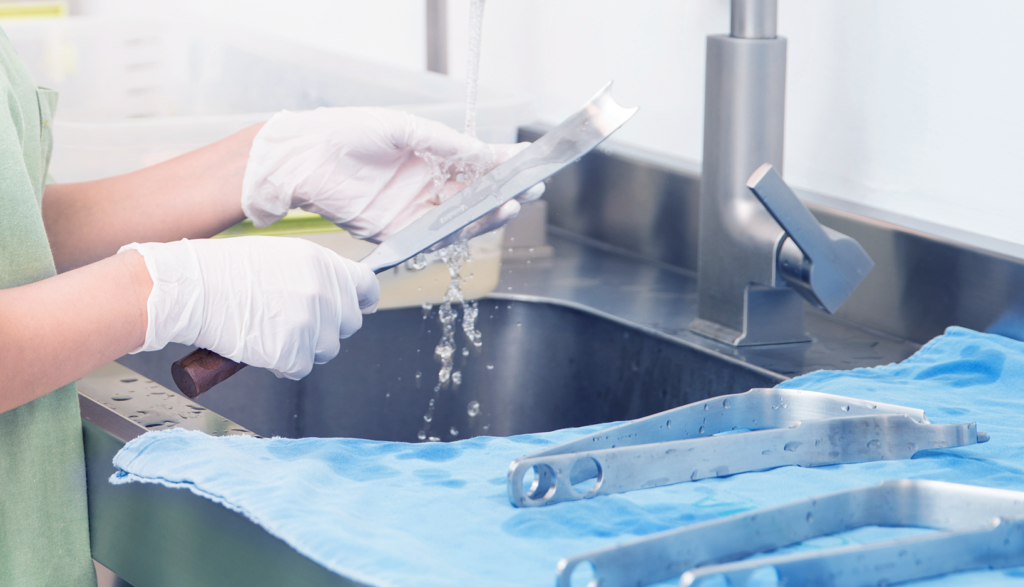
The Spaulding Classification
Originally created in 1939, the Spaulding classification is a system used to differentiate patient care items into three sections: non-critical, semi-critical, and critical. It wasn’t until 1957 that this categorization system truly became more widespread and recognized. The Centers for Disease Control and Prevention defines this as “a strategy for sterilization and disinfection of inanimate objects based on the degree of risk involved in their use.”
In the table below, we will present the different class levels and appropriate methods of disinfection and sterilization.
| Spaulding Classification | Medical Device Contact Level | Risk of Infection | Disinfection Level Required |
| Critical | Bloodstream or break in the skin | High-Level | Sterilization – kills all microorganisms |
| Semi-Critical | Non-intact skin or mucous membrane | Mid-Level | High-Level disinfectant |
| Non-Critical | Intact skin | Low-Level | Low-Level disinfectant |
It is important to note that alcohol is not considered a high-level disinfectant as it is not sporicidal (the ability to disinfect all bacteria and spores). Therefore, it is best to use it for non-critical medical equipment disinfection. For example, this includes stethoscopes and pulse oximeters. Alternatively, heat can be implemented in critical and semi-critical sterilization.
How Heat and Alcohol Fight Bacteria and Viruses
Depending on the Spaulding Classification level, heat, and alcohol can be used to effectively eliminate bacteria and viruses. However, before doing so, you must fully understand proper disinfection procedures. To begin with, the process of heat and alcohol can vary. For example, heat sterilization can be done in an autoclave. Alternatively, any alcohol solution containing ethanol can be a strong disinfectant. Research shows that 70% ethanol concentration is the most effective. With proper implementation, a number of beneficial effects can occur. In particular, protein denaturation will happen. This is when all living viral, fungal, and bacterial proteins lose structure. In turn, they become incapable of performing all functions.
7 Different Ways to Use Heat and Alcohol When Disinfecting
Understandably, disinfection and sterilization procedures can seem stressful. These medical devices are of extreme importance and must be handled with absolute care and caution. Thankfully, there are commercial cleaning companies with professionally trained staff who are experienced and knowledgeable about proper disinfection practices.
If you are located in the Dallas-Fort Worth Metroplex area, consider hiring Dallas Janitorial. They have the ability and high-level disinfectants needed to perform effective and efficient cleaning services.
Medical Equipment
Depending on the medical equipment, alcohol or heat may be the best disinfection method. For small and non-critical items, solutions containing ethanol or isopropyl alcohol can work well. Now, for semi-critical and critical equipment, heat or high-level disinfectants are your best choice.
Also, any type of alcohol cleaning solution must have adequate contact time. Generally, it is recommended that you allow 10 minutes for full exposure. This is a helpful way to ensure more effective results.
Small Surfaces
Moving on, there are plenty of small external surfaces in healthcare facilities that need to be disinfected. While medical equipment may not be placed on them, they can still contain harmful viruses and bacteria. Also, it is best to keep all rooms as clean and sanitary as possible. Therefore, you should use ethyl alcohol to routinely disinfect all small external surfaces.
It should be noted that consistent use can lead to surface swelling and discoloration. Also, alcohol is highly flammable, so make sure that the room is properly ventilated. Before disinfecting, clean the surface with soap and sterile water.
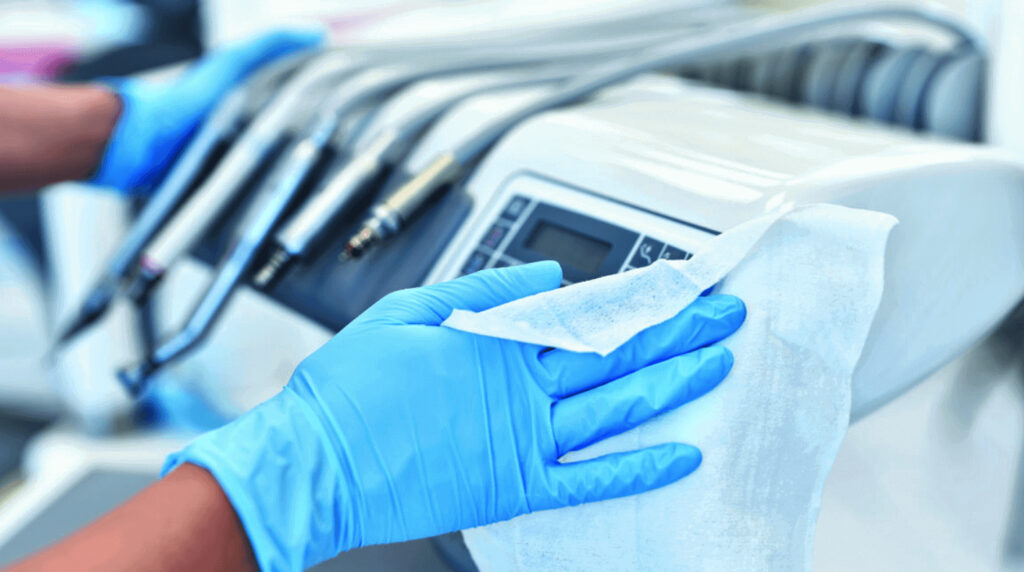
Alcohol Impregnated Wipes
The easiest and quickest way to effectively disinfect any surface or medical device is alcohol-impregnated wipes (low-level disinfectant). These are products combined with 70% ethanol or isopropyl alcohol. Since they are relatively inexpensive and simple to use, it may be best to purchase them in bulk.
These should be used on any high-contact surface. It is important to state that all surfaces or devices must be cleaned beforehand. Otherwise, the alcohol-impregnated wipes may not be as effective.
Steam Under Pressure (Autoclave)
As previously stated, an autoclave is a strong and effective tool used for medical device contamination management. In fact, this is more commonly known as a steam sterilization procedure. Steam under pressure is a widely used method due to its affordability and effectiveness.
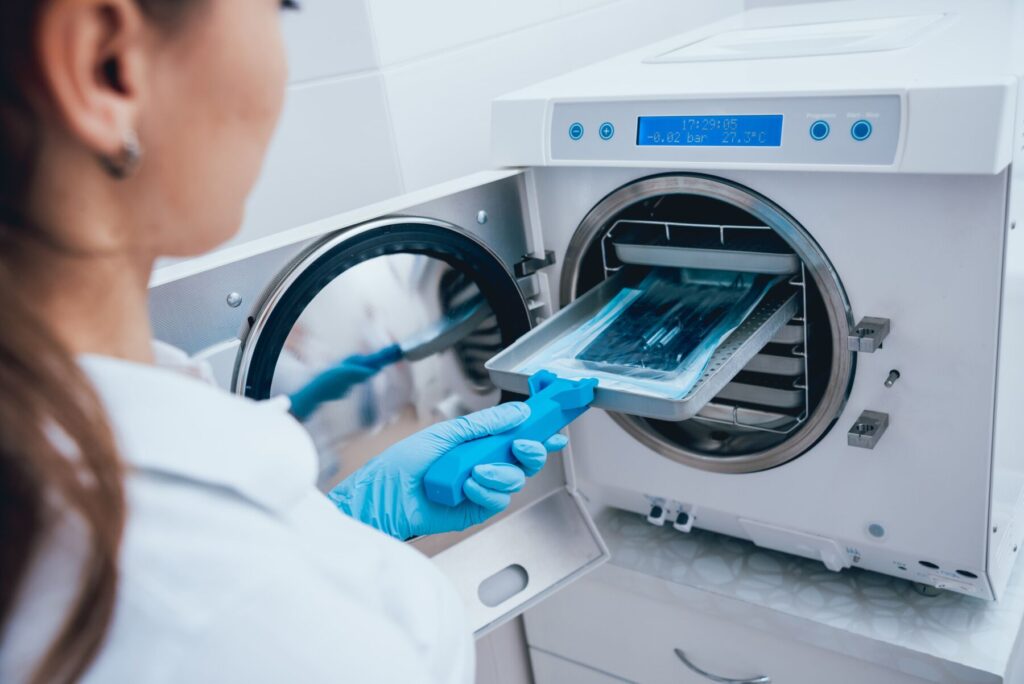
In general, there are two types of autoclaves: gravity displacement autoclaves and high-speed pre-vacuum sterilizers. You should choose which to use depending on the medical equipment.
To continue, there are recommended temperature levels you should set. For gravity displacement autoclaves, the temperature should be set to 250 degrees Fahrenheit. High-speed pre-vacuum sterilizers must be set to 270 degrees Fahrenheit.
In addition, there is a mandatory exposure time required for proper sterilization. Depending on the autoclave, you must allow a contact period of 4 minutes or 30 minutes. Lastly, moisture, such as sterile water, can increase effectiveness.
Chemical Vapor (Formaldehyde)
Although it is uncommon, chemical vapor (formaldehyde) sterilization can provide a variety of benefits. For full transparency, this method is not often used because of its high cost and risk possibility.
If implemented correctly, chemical vapor sterilization provides shorter exposure time and less damage to medical equipment. Corrosion or rusting may not occur. Generally, it is best to use formaldehyde at 140 to 176 degrees Fahrenheit with 75 to 100 percent humidity.
Dry Heat
Finally, there is dry heat sterilization. While this is not the most effective method, it is best used for medical devices that will be damaged by steam. Typically, electronic equipment or those that contain glass or non-aqueous material are sterilized with this method. For best results, healthcare workers set the temperature level to 302 to 356 degrees Fahrenheit.
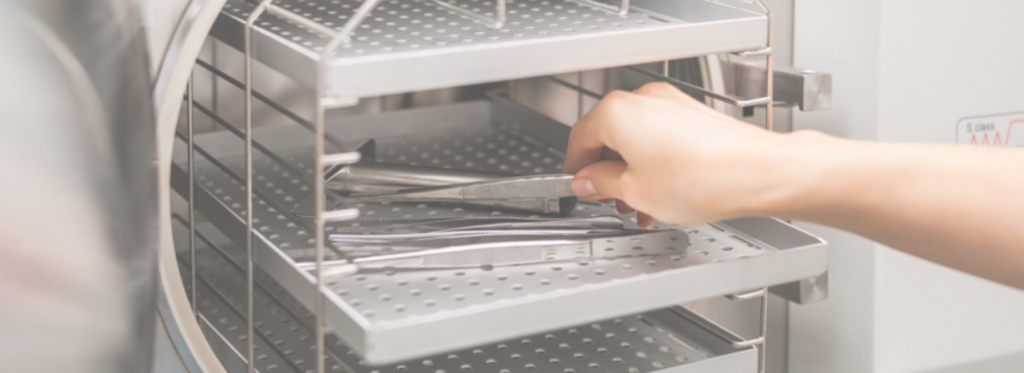
Can Heat and Alcohol Effectively Disinfect Surfaces?
Yes, heat and alcohol can effectively disinfect surfaces and medical equipment. Of course, certain materials may require stronger sterilization methods. There are several different types of chemical disinfectants. You can use alcohol, formaldehyde, hydrogen peroxide, and chlorine compounds.
At Dallas Janitorial Services, our team of qualified staff members is fully prepared for proper disinfection and sterilization practices.

Frequently Asked Questions
Why is 70% alcohol used for sterilization?
Typically, 70% alcohol is used for disinfection. This is because that concentration level is known as the dilution of absolute alcohol. Since it contains sterile water, it can dissolve slower and denature enzymatic and structural proteins.
What kills germs better, alcohol or hydrogen peroxide?
Both alcohol and hydrogen peroxide can effectively kill germs and bacteria. Hydrogen peroxide, a high-level disinfectant, requires longer exposure time, usually 10 minutes. Alternatively, alcohol solutions, a low-level disinfectant, work faster. It is important to note that you should use 3% hydrogen peroxide concentration.
What do hospitals use to disinfect equipment?
Hospitals use a variety of tools and methods to properly disinfect and sanitize medical equipment. For non-critical items and external surfaces, a low-level disinfectant can be effective. On the other hand, critical items may require heat or chemical vapor sterilization.


